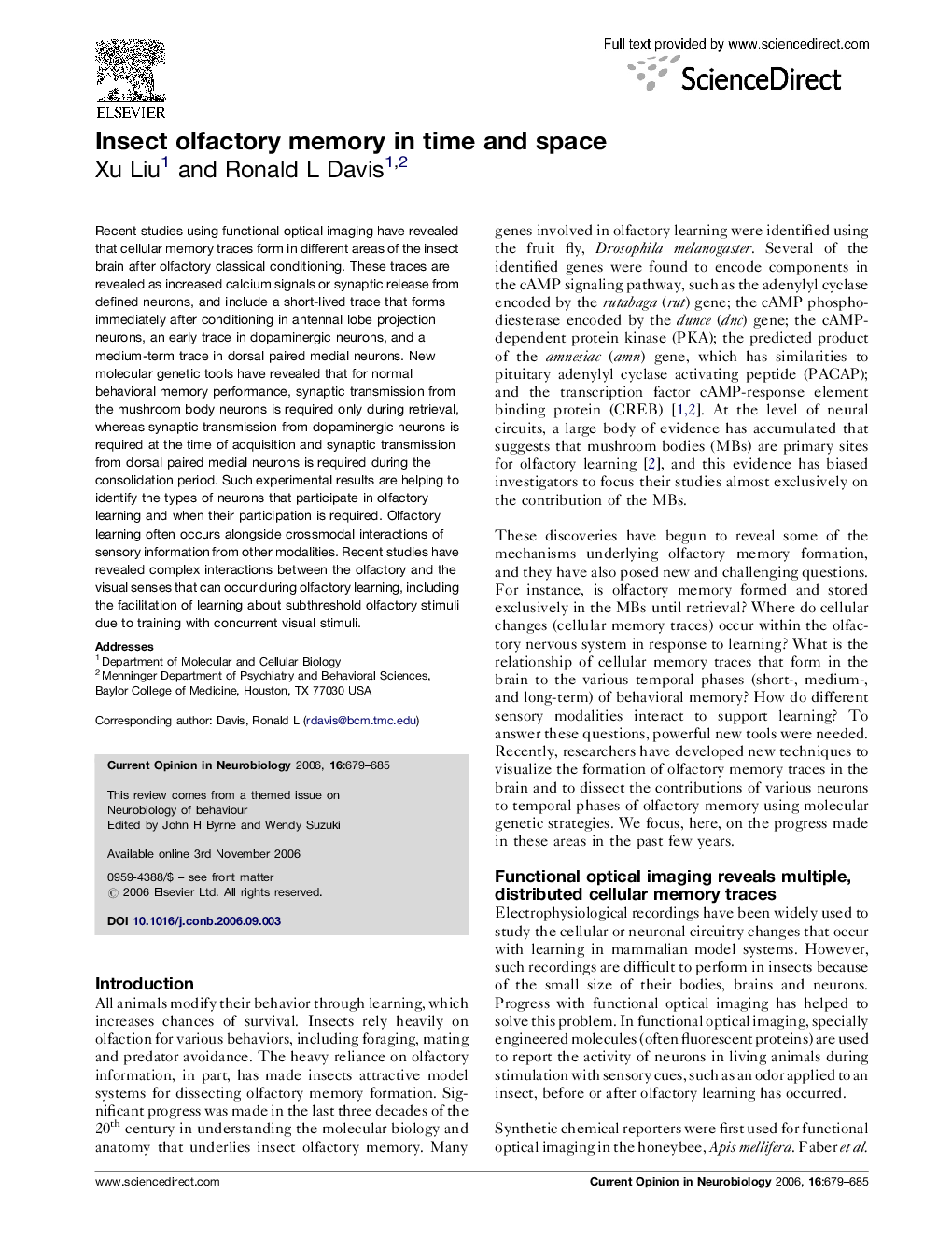| Article ID | Journal | Published Year | Pages | File Type |
|---|---|---|---|---|
| 4334701 | Current Opinion in Neurobiology | 2006 | 7 Pages |
Recent studies using functional optical imaging have revealed that cellular memory traces form in different areas of the insect brain after olfactory classical conditioning. These traces are revealed as increased calcium signals or synaptic release from defined neurons, and include a short-lived trace that forms immediately after conditioning in antennal lobe projection neurons, an early trace in dopaminergic neurons, and a medium-term trace in dorsal paired medial neurons. New molecular genetic tools have revealed that for normal behavioral memory performance, synaptic transmission from the mushroom body neurons is required only during retrieval, whereas synaptic transmission from dopaminergic neurons is required at the time of acquisition and synaptic transmission from dorsal paired medial neurons is required during the consolidation period. Such experimental results are helping to identify the types of neurons that participate in olfactory learning and when their participation is required. Olfactory learning often occurs alongside crossmodal interactions of sensory information from other modalities. Recent studies have revealed complex interactions between the olfactory and the visual senses that can occur during olfactory learning, including the facilitation of learning about subthreshold olfactory stimuli due to training with concurrent visual stimuli.
